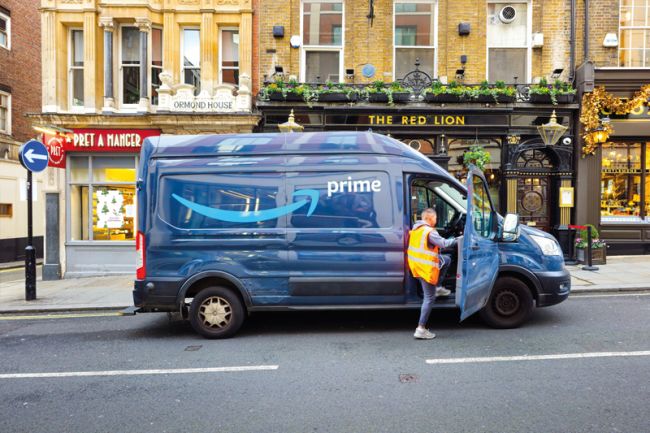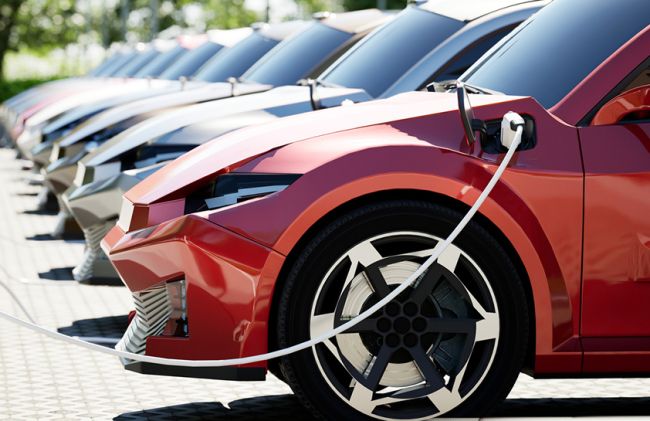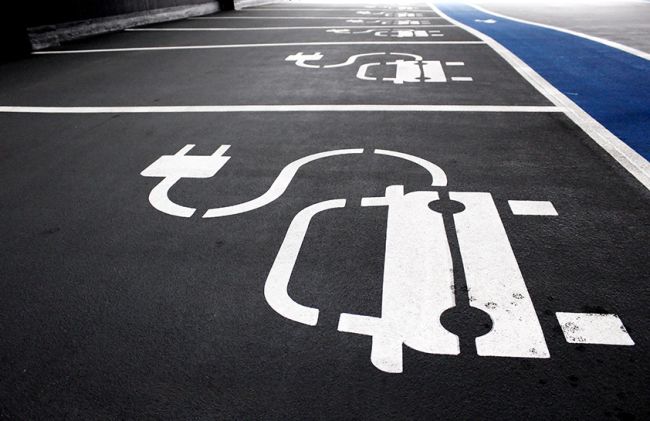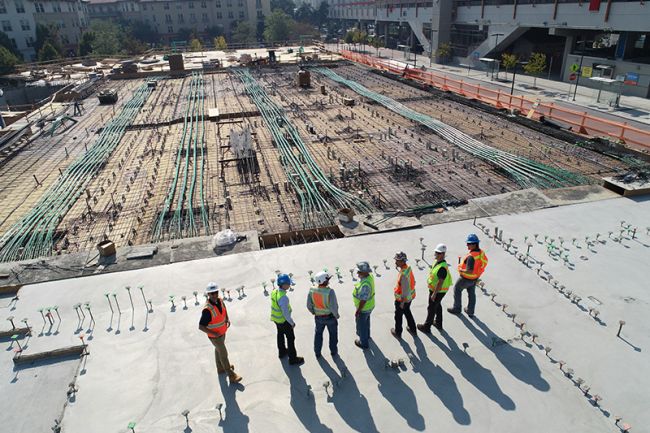Why should developers care about Mobility Hubs?
Could mobility hubs support the development of better connected and more sustainable homes?
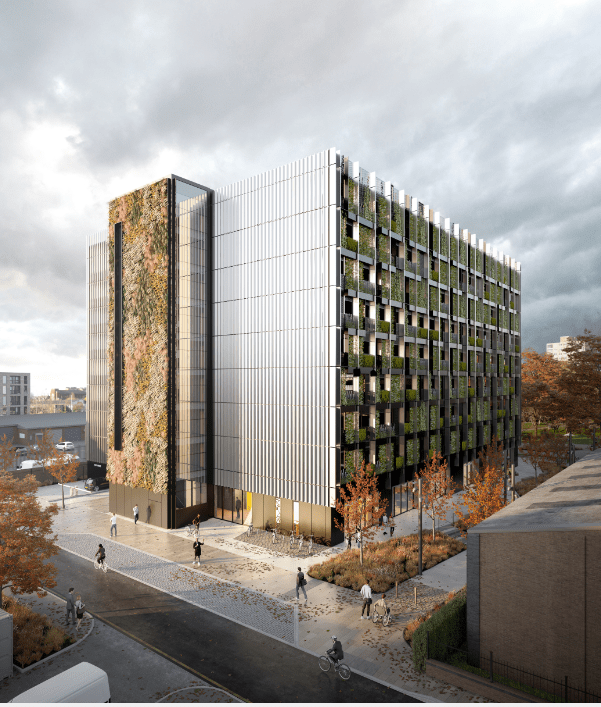
Why should developers care about Mobility Hubs?
The current UK government was elected on a promise to ‘get Britain building’ but with community concerns over the impact of developments on local infrastructure ever prevalent, is there a solution that could support the development of better connected and more sustainable homes?
In recent years Steer has been instrumental in planning the development of mobility hubs across the UK and North America, helping local authorities and governments from Calderdale to California create a more sustainable and integrated future.
However, it is not just the public sector that is taking an interest in the role mobility hubs can play in improving access to amenities, supporting community life and reducing transport emissions. To date Steer has helped many private developers integrate mobility hubs into their plans to both increase community buy in and boost the possibly of planning approval.
What are mobility hubs?
Mobility hubs bring together different sustainable transport modes and services in a recognised location to encourage a multimodal lifestyle and reduce reliance on the private car. By enabling convenient access to a range of modes of transportation, including public transport, shared bikes, car clubs and supporting facilities such as parcel lockers and local information, they act as a localised focus for travel to, from and within developments.
Mobility hubs are a flexible concept meaning that they can be designed to suit a wide variety of mobility needs and challenges. In new developments, mobility hubs can provide first and last mile connectivity to public transport through shared mobility options. By leveraging the benefits of different transportation modes, services, and technologies, mobility hubs support the delivery of equity, climate, health, and mobility objectives. The implementation of mobility hubs can also engage local communities and support placemaking initiatives.
Steer’s work on mobility hubs in the private development space has supported developers across the UK to reduce the need to provide expensive car parking allocated to individual residential units. We provided expert advice to support development of the Ancoats Mobility Hub (currently under construction) that was designed by a team led by architecture firm Buttress. The facility will provide 150 secure bike parking spaces and changing facilities, 100+ electric vehicle charging points and dedicated provision of car club vehicles for residents and visitors through the regeneration of a central district of Manchester. We also supported the Hadley Property Group with the creation of a vision for a mobility hub in Blackwall Yard, a mixed-use development on the bank of the Thames in London with a mobility hub hosting shared micromobility and private bike, e-bike and e-scooter lease provision. As well as public transport access in close proximity, both facilities will host community amenities including delivery lockers, café/ retail services, and community spaces.
Why are they useful for developers?
Mobility hubs offer an innovative solution to some age-old challenges for developers.
Most local authorities in the UK have policies to reduce car use that bring together climate goals and concerns over congestion with developers who align with these goals significantly improving their chances of obtaining planning permission, and can reduce the need for private car parking provision, allowing greater space for residential or rental units.
- Major cities including Manchester, London, Bristol and Glasgow have embraced a Transit-orientated development (TOD) approach that sees high-density, mixed-use developments built near public transport hubs, with more limited private car parking provision.
- Since the pandemic there has been a growth in funding for active transport networks in towns and cities, often integrating these networks with existing public transport.
- Low-traffic neighbourhoods and clean air zones across the UK have (to differing extents) placed limitations on parking and encourage active travel as well as installation of electric vehicle (EV) infrastructure.
Because mobility hubs enable greater active travel provision, and shared micromobility that can improve access to public transport and car clubs which reduce the need to own a vehicle and EV charging enabling the use of zero tailpipe emission vehicles they offer an innovative joined-up solution for developers to support local authority policies.
Mobility hubs can also increase the development value. It is increasingly common today for new developments reduce the level of parking capacity for residents meaning alternative provision is necessary.
Mobility hubs also offer an opportunity to alleviate the pressures of ‘Section 106’ agreements, a reference to Section 106 of the Town and Country Planning Act 1990 which allow local authorities to request financial contributions from developers for transport and other infrastructure that will be affected by their developments. Including a mobility hub from the early stages of planning can help developers reduce these costs by demonstrating a contribution to local infrastructure and aligned policy goals in local areas.
What can Steer do
Steer’s New Mobility team are the UK market leader in supporting the planning and development of mobility hubs and have extensive experience in helping clients to plan for, develop, procure and implement mobility hubs of different size and location both across the UK and globally. We have supported planning of 400+ Mobility Hubs globally from setting objectives, feasibility analysis through to procurement.
- Experience of developing mobility hub feasibility studies and business cases including demand analysis, financial feasibility and impact assessments for both landowners such as Network Rail, and private property developers, and local authorities;
- Dedicated planning and design team with expertise in site evaluation and location assessment including environmental assessment, production of CAD plans and conceptual designs for mobility hubs, in addition to planning and designing transport interchanges, public realm improvements and wayfinding;
- Extensive track record in providing feasibility, procurement, operation and management advice to transport authorities including mobility hubs support for West Yorkshire Combined Authority, and SEStran in the UK, Plymouth City Council, and National Transport Authority in Ireland;
- Expert understanding of mobility hub costs and risks through regular engagement with shared mobility operators and providers for projects for over 10 years;
In addition, Matthew Clark, Head of New Mobility, is Chair of CoMoUK – the charity that has developed accreditation of mobility hubs in the UK.







